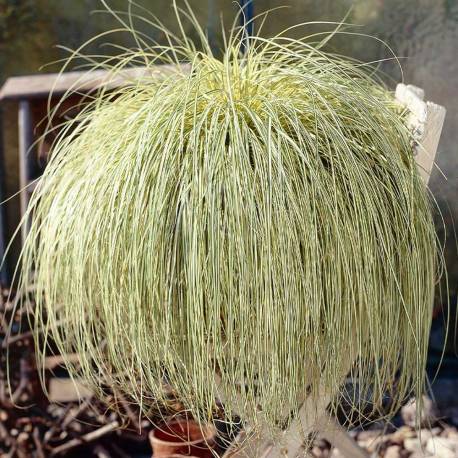No products
Product successfully added to your shopping cart
There are 0 items in your cart. There is 1 item in your cart.
Carex oshimensis 'Evergold'
Un Quadrato di Giardino - Podenzano (PC)Carex oshimensis 'Evergold'
New
Perennial herbaceous plant, evergreen for shade, forming dense elegant tufts, with light green and cream-gold variegated foliage. Particularly valued in raised pots, due to the characteristic hanging habit and curved leaves, useful for giving a touch of color and structure to flowerbeds. Also suitable for growing indoors or on the veranda.
La pianta è in vaso di 19 cm di diametro
Plant in reproduction, You can pre-book it, contact us

Perennial herbaceous plant, evergreen for shade, forming dense elegant tufts, with light green and cream-gold variegated foliage. Particularly valued in raised pots, due to the characteristic hanging habit and curved leaves, useful for giving a touch of color and structure to flowerbeds. Also suitable for growing indoors or on the veranda.
It creates 'spiral' shaped spots, as the leaves develop enveloping around the centre, with a typical curvature, peculiar to this variety.
Carexes are particularly easy to grow.
Being evergreen, it is interesting for creating movement and soul all year round in the garden, in borders as well as in pots and bowls, where it remains unchanged in every season.
Suitable as a garnish for undergrowth plants, such as ferns, hellebores, epimedium, geranium, liriope, hosta.
The name 'Carex' derives from the Greek "kéiro" meaning 'I cut', referring to the thin margins of the leaves of this genus.
Classification
Common name: Variegated sedge.
Genus and species: Carex oshimensis (syn. Carex hachijoensis)
Cultivar: 'Evergold'
Family: Cyperaceae.
Characteristics
Description of the flowers: Apical spikes, quite showy.
Flower color: Purplish-brown.
Flowering period: Early Spring.
Leaves: Ribbon-shaped, about half a centimeter wide, variegated longitudinally with light green and gold.
Perfume: -
Dimensions: Height approximately 30 cm, width approximately 80 cm.
Cultivation
Exposure: Partial shade (cannot tolerate more than morning sun), to very dark shade.
Soil: Any, even poor.
Irrigation: As needed, drought tolerant.
Frost resistance: USDA 5
Care
Pruning: Does not require pruning, remove any old basal leaves. To renew it, in case of damage from perennial snow or particularly intense frost, it is possible to cut the burnt tops at the end of winter before vegetative growth, with scissors.
Propagation: It is propagated by dividing the tufts in spring.











